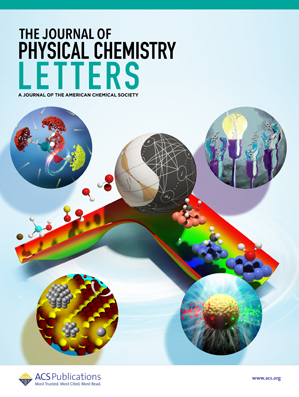揭示DNA杂交动力学通过高灵敏度SERS检测:洞察构象变化和寡核苷酸长度效应
IF 4.8
2区 化学
Q2 CHEMISTRY, PHYSICAL
引用次数: 0
摘要
本研究证明了利用市售的表面增强拉曼光谱(SERS)底物对DNA杂交的高灵敏度检测。我们用不同长度(5-20个碱基)的硫代单链腺嘌呤(polyA) DNA功能化了金纳米结构,并研究了它们在不同浓度下与互补胸腺嘧啶(polyT)链的杂交。在735 cm-1处腺嘌呤环呼吸模式的显著光谱变化证实了DNA杂交,突出了其作为杂交检测关键标记的潜力。利用时域有限差分法(FDTD)模拟了金表面电磁场的分布。同时,主成分分析(PCA)成功地识别了DNA杂交引起的光谱变化。通过将实验SERS测量与计算建模相结合,我们提出了一种高度敏感和特异性的DNA杂交监测方法。这些结果支持了先进核酸检测技术的发展,并为研究生物分子相互作用提供了可靠的平台。本文章由计算机程序翻译,如有差异,请以英文原文为准。
Unveiling DNA Hybridization Dynamics via High-Sensitivity SERS Detection: Insights into Conformational Changes and Oligonucleotide Length Effects
This study demonstrates the highly sensitive detection of DNA hybridization using commercially available Surface-Enhanced Raman Spectroscopy (SERS) substrates. We functionalized the gold nanostructures with thiolated single-stranded adenine (polyA) DNA of various lengths (5–20 bases) and investigated their hybridization with complementary thymine (polyT) strands across different concentrations. DNA hybridization was confirmed by significant spectral changes in the adenine ring breathing mode at 735 cm–1, highlighting its potential as a key marker for hybridization detection. Finite-difference time-domain (FDTD) simulations were used to visualize the distribution of the electromagnetic field at the gold surface. In parallel, principal component analysis (PCA) successfully identified spectral changes resulting from DNA hybridization. By combining experimental SERS measurements with computational modeling, we present a highly sensitive and specific method for monitoring DNA hybridization. These results support the development of advanced nucleic acid detection techniques and offer a reliable platform for investigating biomolecular interactions.
求助全文
通过发布文献求助,成功后即可免费获取论文全文。
去求助
来源期刊

The Journal of Physical Chemistry Letters
CHEMISTRY, PHYSICAL-NANOSCIENCE & NANOTECHNOLOGY
CiteScore
9.60
自引率
7.00%
发文量
1519
审稿时长
1.6 months
期刊介绍:
The Journal of Physical Chemistry (JPC) Letters is devoted to reporting new and original experimental and theoretical basic research of interest to physical chemists, biophysical chemists, chemical physicists, physicists, material scientists, and engineers. An important criterion for acceptance is that the paper reports a significant scientific advance and/or physical insight such that rapid publication is essential. Two issues of JPC Letters are published each month.
 求助内容:
求助内容: 应助结果提醒方式:
应助结果提醒方式:


